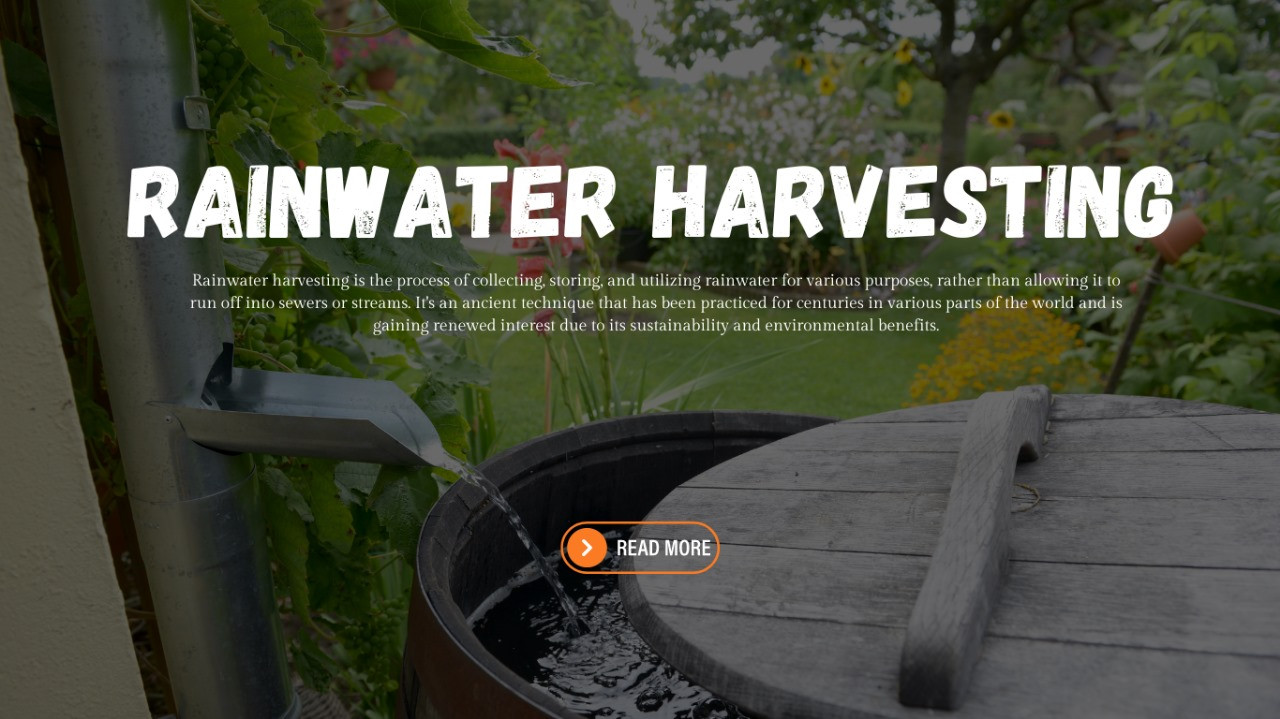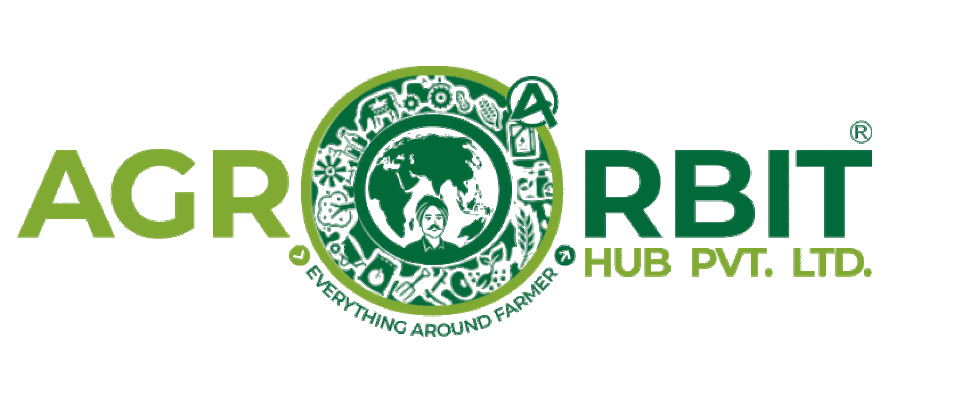

Rainwater Harvesting (RWH)
A DROP HARVESTED IS A CROP HARVESTED
How can you imagine life without water?
Rainwater, a gift from the skies above, has been an essential element of life since time immemorial. Yet, with the advent of modernization and urbanization, we have often overlooked its significance, allowing it to flow away without realizing its potential. However, in recent years, the concept of rainwater harvesting has gained momentum as a sustainable solution to water scarcity and environmental degradation. In this blog, we delve into the importance of rainwater harvesting, its methods, and the numerous benefits it offers to individuals and communities alike.
Rainwater Harvesting:
Rainwater harvesting is the process of collecting, storing, and utilizing rainwater for various purposes, ranging from irrigation and household chores to groundwater recharge and reducing stormwater runoff. It involves the capture of rainwater from rooftops, surfaces, and other catchment areas, channelling it into storage systems such as tanks, cisterns, or underground reservoirs, and subsequently using it when needed.

Methods of Rainwater Harvesting:
Rooftop Harvesting: One of the most common methods, rooftop harvesting involves collecting rainwater that falls on building rooftops. The water is directed through gutters and downpipes into storage tanks or underground reservoirs for later use.
Surface Runoff Harvesting: This method involves collecting rainwater from surfaces such as roads, pavements, and open fields. Channels and trenches are used to divert the water into storage structures or recharge pits.
Stormwater Management Systems: These systems incorporate various techniques such as permeable pavements, green roofs, and rain gardens to capture and utilize rainwater on-site, reducing runoff and replenishing groundwater.
Check
Dams and Contour Bunds: In rural areas, check dams and contour bunds are constructed to slow
down the flow of rainwater, allowing it to percolate into the soil and recharge
aquifers.
Benefits of Rainwater Harvesting
Water Conservation: By capturing rainwater, we reduce our dependence on conventional water sources such as rivers and groundwater, conserving these precious resources for future generations.
Mitigating Floods and Erosion: Rainwater harvesting helps in reducing surface runoff, thereby minimizing the risk of floods and soil erosion, especially in urban areas with inadequate drainage systems.
Groundwater Recharge: Recharging groundwater aquifers through rainwater harvesting contributes to the sustainable management of water resources, ensuring a reliable supply of water for drinking and irrigation purposes.
Cost Savings: Utilizing rainwater for non-potable uses such as irrigation, toilet flushing, and laundry can lead to significant cost savings on water bills, especially for households and businesses.
Environmental Benefits: Rainwater harvesting promotes biodiversity by maintaining natural hydrological cycles, preserving habitats, and reducing the carbon footprint associated with water treatment and distribution.
Resilience to Drought: In regions prone to drought
and water scarcity, rainwater harvesting provides a decentralized and reliable
source of water, enhancing resilience to climatic variability and ensuring
water security.
Residential Buildings: RWH systems can be installed in residential buildings,
including houses, apartments, and condominiums. Rooftops can collect rainwater
which can then be stored and used for various purposes such as gardening,
flushing toilets, or even for drinking water with appropriate filtration.
Commercial Buildings: Similarly, RWH systems can be installed in commercial
buildings such as offices, schools, and hospitals. These systems can help
reduce water bills and contribute to sustainable water management practices.
Industrial Facilities: Industries can also benefit from RWH systems to meet their
water needs for processes, cooling, and other operations. Large rooftops and
open spaces in industrial areas can be utilized for rainwater collection.
Public Infrastructure: RWH structures can be incorporated into public infrastructure
projects such as parks, community centers, and government buildings. These
structures can help conserve water and reduce the strain on municipal water
supplies.
Agricultural Land: In agricultural areas, RWH systems can be used to collect
rainwater for irrigation purposes. This can help farmers reduce their
dependence on groundwater and surface water sources, especially in regions
prone to drought.
Urban Areas: Urban areas with limited access to clean water sources or
facing water scarcity issues can benefit greatly from RWH systems. These
systems can help supplement municipal water supplies and improve resilience to
water shortages.
Rural Areas: Rural communities, particularly those without access to centralized water supply systems, can utilize RWH structures to meet their water needs for domestic use, agriculture, and livestock.
Sensitive Ecosystems: In ecologically sensitive areas, RWH systems can help reduce
the impact of water extraction on local ecosystems by providing an alternative
water source for human activities.
Which sensors is use in RWH for recognition of water level?
A float
switch consists of a buoyant float connected to a switch mechanism. As the
water level in the tank rises, the float also rises. When the water level
reaches a certain predetermined point, the float triggers the switch to open or
close a circuit, signalling that the tank is full. This signal can be used to
control valves, pumps, or other mechanisms to stop the inflow of water.
Float
switches are simple, reliable, and cost-effective devices commonly used in rainwater harvesting systems. They are
available in various designs, including vertical and horizontal orientations,
to suit different tank configurations and applications. Additionally,
electronic sensors such as ultrasonic level sensors or pressure sensors can
also be used to monitor water levels in tanks and trigger actions when the tank
reaches capacity.
Overall, the choice of sensor depends on factors such as the size of the tank, the complexity of the rainwater harvesting system, and the specific requirements of the application. Regardless of the type of sensor used, ensuring proper calibration and maintenance is essential to ensure accurate and reliable operation.
How to install RWH technology in farm?
Rooftop Harvesting for Farm Structures: Farmers can
install rainwater harvesting systems on barns, sheds, and other farm structures
to collect rainwater from rooftops. This harvested rainwater can then be stored
in tanks or cisterns and used for various agricultural purposes such as
irrigation, livestock watering, and cleaning equipment.
Surface Runoff Collection: In addition to rooftop harvesting, farmers can implement surface runoff collection techniques to capture rainwater from farm roads, pathways, and open fields. Channels, trenches, and contour bunds can be used to direct runoff into storage reservoirs or recharge pits, where it can be stored or allowed to percolate into the soil to recharge groundwater aquifers.
How to use this technology in Farming ?
Indeed,
traditional rainwater harvesting methods in rural areas often involve the use
of surface storage bodies such as lakes, ponds, and irrigation tanks. These
reservoirs serve as storage for rainwater collected during periods of rainfall,
which can then be utilized for various purposes including farming, livestock,
and domestic use during dry periods.
Additionally,
implementing drip irrigation systems is an efficient way for farmers to utilize
collected rainwater in their fields. Drip irrigation delivers water directly to
the roots of plants, minimizing evaporation and reducing water waste compared
to traditional overhead irrigation methods. This not only conserves water but
also ensures that plants receive an adequate and consistent water supply, which
is essential for optimal growth and productivity.
Moreover, by
capturing rainwater and preventing surface runoff, farmers can effectively
prevent soil erosion and nutrient loss, thereby maintaining soil fertility and
overall environmental health on their farmland. This is crucial for sustainable
agriculture practices, as healthy soil is essential for successful crop
production and long-term land productivity.
Overall, integrating traditional rainwater harvesting techniques with modern irrigation systems like drip irrigation can greatly benefit rural communities by ensuring water security, enhancing agricultural productivity, and promoting environmental sustainability.
Conclusion:
Rainwater harvesting stands as a vital solution to address water scarcity and environmental degradation. By capturing and utilizing rainwater through various methods, we can conserve water resources, mitigate floods and erosion, recharge groundwater, and promote sustainable agriculture. Rainwater harvesting not only benefits individuals and communities by reducing reliance on conventional water sources and cutting costs but also contributes to environmental conservation and resilience to drought. From residential buildings to agricultural land and sensitive ecosystems, integrating rainwater harvesting technology offers a promising pathway towards a more sustainable and water-secure future.
Note : This research is based on google we are not responsible for any other circumstances.







